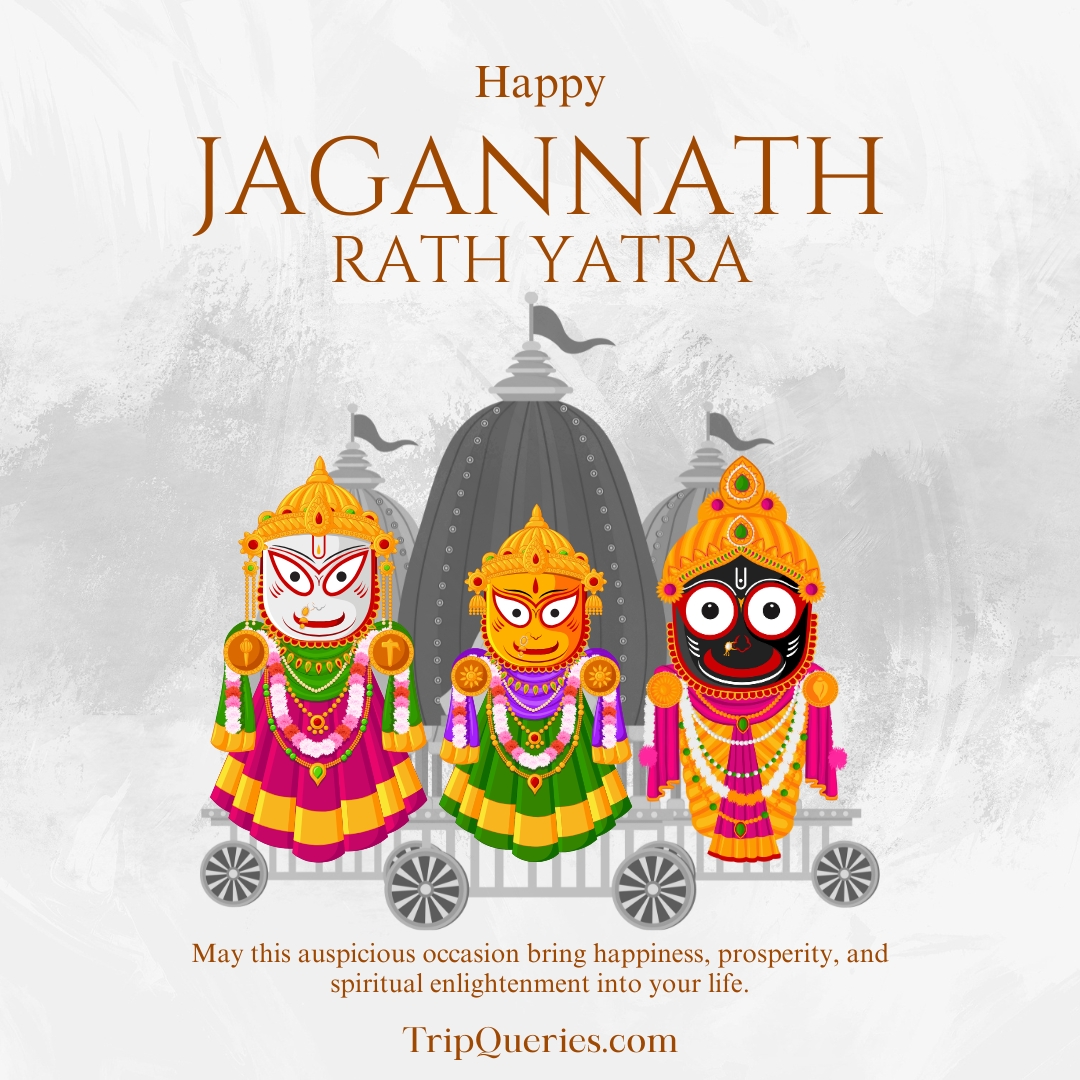The Jagannath Rath Yatra in Puri is one of the world’s largest and oldest chariot festivals, celebrated with immense devotion, grandeur, and spirituality. Pilgrims from across the globe flock to Puri, Odisha, to witness the deities of the Jagannath Temple set out on their divine journey in massive wooden chariots. If you’re planning to attend this sacred event in 2025, here’s everything you need to know — from dates to travel tips, what to expect, and festival timeline.
When is Rath Yatra 2025?
The Rath Yatra 2025 will commence on Friday, June 27, on the Dwitiya Tithi of Ashadha Shukla Paksha, as per the Hindu lunar calendar. This marks the beginning of Lord Jagannath, Lord Balabhadra, and Goddess Subhadra’s annual visit to their aunt’s home at the Gundicha Temple, pulled by millions of devotees.
What Happens During the Rath Yatra Festival?
The 9-day festival is packed with sacred rituals, traditions, and vibrant public participation. Here’s what you can expect:
Key Highlights:
- Gundicha Marjana (June 26): The temple is cleaned for the arrival of the deities.
- Rath Yatra (June 27): The main event where chariots are pulled by thousands of devotees.
- Hera Panchami (July 1): Goddess Lakshmi’s symbolic visit to the Gundicha Temple.
- Bahuda Yatra (July 4–5): The deities return to the main Jagannath Temple.
- Suna Bhesha (Golden Attire – July 5): Lord Jagannath adorned in gold ornaments on the chariot.
- Niladri Bijay (July 5–8): Final re-entry of the deities into the temple.
These rituals are accompanied by traditional dances, music, spiritual chants, and a divine atmosphere unlike anything else in the world.
How to Reach Puri for Rath Yatra 2025?
By Air:
- The nearest airport is Biju Patnaik International Airport, Bhubaneswar (~60 km).
- Cabs and buses are available round the clock for travel to Puri (approx. 2 hours).
By Train:
- Special trains run during Rath Yatra week to Puri from major cities like Visakhapatnam, Kolkata, and Delhi.
- Book tickets at least 60 days in advance for confirmed berths.
By Road:
- NH-316 connects Bhubaneswar and Puri.
- Government and private buses are available frequently.
- Expect diversions during the main festival days.
Where to Stay in Puri During Rath Yatra?
Given the massive inflow of devotees, early accommodation booking is crucial. Choose hotels or guesthouses near:
- Bada Danda (Grand Road) – for a close view of chariots.
- Swargadwar – popular and spiritual beachside location.
- CT Road – quieter area but well-connected.
Some dharmashalas and temple-run lodges also provide budget-friendly options.
Travel Advisory for Rath Yatra 2025
Crowd Management:
- Over 4–5 lakh devotees expected on Rath Yatra day.
- Authorities will implement crowd control barricades, dedicated entry-exit routes, and emergency service points.
Weather Alert:
- June–July is monsoon season. Expect high humidity, sudden rains, and possible waterlogging.
- Pack light raincoats, umbrellas, waterproof bags, and breathable clothes.
Safety & Security:
Local Guidelines:
- Follow official traffic advisories.
- Avoid bringing large luggage or valuables to Bada Danda.
- Medical booths and first-aid centers will be stationed across the route.
What to Expect Spiritually & Emotionally
- A sea of devotion: The chants of “Jai Jagannath” will echo across the city.
- Participation in rituals like Chhera Pahanra (where the King of Puri sweeps the chariots) and Dahuka Boli (traditional chants) offer once-in-a-lifetime spiritual experiences.
- Pulling the chariot ropes is believed to wash away sins and bless devotees with good fortune.
The aura, colors, energy, and connection with tradition make this festival both spiritually uplifting and emotionally unforgettable.
Planning Tips for First-Time Visitors
- Arrive by June 25 to avoid last-minute travel disruptions.
- Carry essentials like reusable water bottles, light snacks, sunscreen, and a portable charger.
- Avoid alcohol, tobacco, and leather items, especially near temple premises.
- Respect local customs — dress modestly, remove shoes near sacred places, and do not push or overcrowd rituals.
- earn a few phrases in Odia to interact with locals — it’s always appreciated.
Explore More Around Puri
While in Puri, you can also visit:
- Chilika Lake—for boating and bird watching.
- Konark Sun Temple—UNESCO World Heritage Site.
- Raghurajpur Village—for traditional art and crafts.
- Puri Beach—enjoy local seafood and sand art.
The Jagannath Rath Yatra 2025 isn’t just a festival—it’s a vibrant convergence of faith, culture, and community. With centuries-old traditions and the pulse of devotion in the air, it offers a divine experience for anyone who visits.
Final Thoughts
Make your journey safe and fulfilling by planning ahead and immersing yourself fully in the spiritual heritage of Puri, Odisha.
